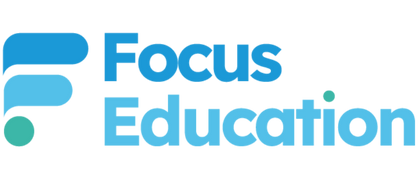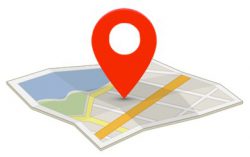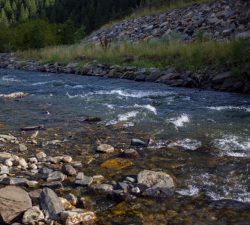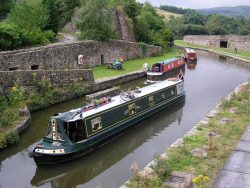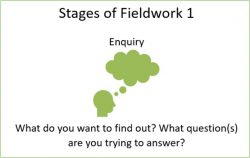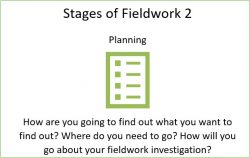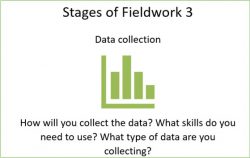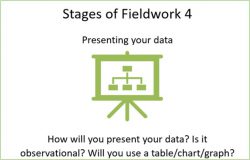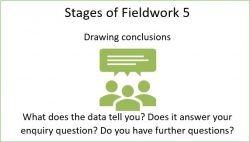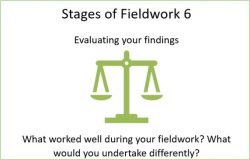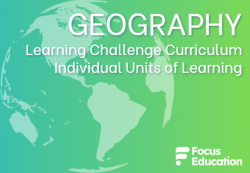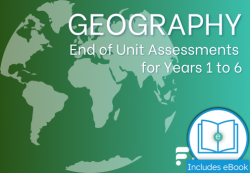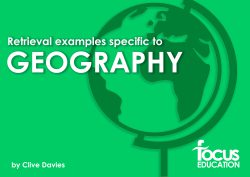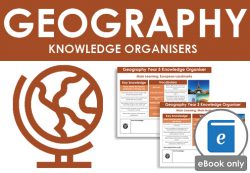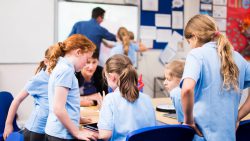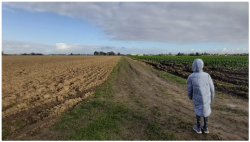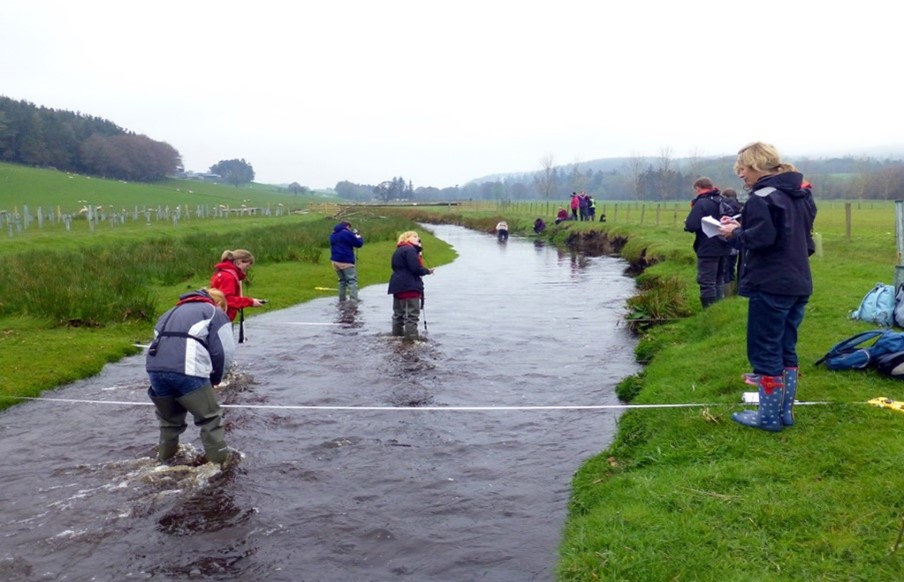
In most of the training courses, geography or otherwise, I deliver on specific aspects of subjects, I make a point of referring to how children learn. Metacognition, by definition, is the understanding of one’s own thought processes, and in order to help children understand how they learn, we need to have an understanding ourselves of how they learn too. As educators, we are continuously putting together curriculum maps and learning progressions to ensure that children learn in manageable steps and that prior learning is continuously built upon by making appropriate links. This is a really important part to curriculum mapping, but there are other significant factors to consider when developing a curriculum alongside the knowledge and skills progression.
One of those factors is that of experiences. When we are teaching children, we have to consider experiences in two ways. First of all, what have the children actually experienced already. And I mean that in the broadest sense, for example, have they ever seen cows and sheep before? Have they been to the supermarket? Have they ever been on a trip to a museum or to the cinema? The children we teach come to us at so many differing levels of experience and it is our job to try and level the playing field, to ensure that all children have equal opportunities in terms of accessing the curriculum that we are striving to deliver. That brings me nicely to my second point, which is that we need to carefully plan the experiences we want to give children on their journey through school life. If we do this, and if we can get it right, then we can enable our students to realise their potential and develop knowledge and skills which allow them to become life-long learners. Providing experience is key to ensuring knowledge can be acquired and learned within the right context, and this is something which applies in a huge way to geography.
When we talk about geography, there are some key aspects that we must consider that come directly from the national curriculum: developing locational knowledge, comparing human and physical features and learning essential geographical skills. However, in order to do this effectively, we need to also have a focus on a vital aspect that the national curriculum dedicates a whole section to in both Key Stage 1 and Key Stage 2, and that is fieldwork. Fieldwork is the necessary experiential learning that we simply must embed as part of our geography curriculum in order to ensure that the children develop a solid understanding of the knowledge and concepts that we plan within our curriculum mapping. In order to teach geography successfully, we need to make a purposeful decision as subject or curriculum leaders to give children the right experiences at the right times.
Developing basic locational knowledge
If you want children to develop an understanding of where things are, they have to experience it in real life. As a simple example, children don’t turn up in a school building and magically know their way around. They learn the layout of the school over a period of time whereby their teachers and other school staff spend time modelling to them. Initially, in EYFS, this is as simple as the different areas of the classroom and where the toilets are. You make links to things they will remember from their own homes. As they continue to move through Primary school, the modelling continues; where their next classroom is, where the junior toilets are, where the Key Stag 1 or 2 playground is. They start to navigate the school more independently as their locational knowledge of the area increases. This is also what enables them to turn up on their first day of high school and navigate the corridors and range of buildings that they may have to travel through. Without that locational grounding of the layout of a school, modelled by their teachers, they wouldn’t develop that independence. So we must use fieldwork in all aspects of developing locational knowledge, by taking children on walks of the local area, studying the use of buildings, making field sketches of their observations and collecting information that develops a locational framework of knowledge within their local context. This way they can really grow as geographers and apply their learning to new contexts effectively.
Human and physical features
When we talk about geographical features, it’s important to be able to recognise the difference between human and physical features. Fieldwork plays a crucial role here, as we cannot expect children to be able to identify these features on maps and plans unless they have some experience of them or at least a reference point. Understanding the difference between a lake and a reservoir, or a river and a canal, is so much easier for children to understand if they are able to explore them first hand. Now this obviously depends on your locality, but if you can’t go and see something ‘in the field’, we are living in an age where technology can take us there. The use of digital mapping software such as Google Earth can take us to visit places on the other side of the world. We can use photographs to explore places that we can’t physically visit too. Not to mention the growing possibilities that come with using virtual reality to tour famous landmarks and aspects of geography that would otherwise be completely inaccessible to us. Children need to see these human and physical features, and field work, whether its ‘in the field’ or virtual, is so important in supporting children’s developing knowledge here.
Stages of fieldwork
When planning fieldwork activities, it is also important that we provide a structure to them. By doing this, we can create a strong sense of purpose and direction so that the children are really focused on their learning. Consider fieldwork, in some ways, like a scientific investigation.
First of all, what is the purpose of this fieldwork? What are we trying to determine by undertaking it. In all areas of the curriculum, it is useful to have an enquiry approach as it encourages children to develop their own perceptive questions. Modelling the purpose of fieldwork is really important, so having a question to direct this is a perfect starting point.
Once the focus has been decided, it’s important to develop a plan for how the fieldwork will be carried out. If you want the children to carry out a traffic survey, encourage them to consider what they will do to collect the information they need. Where will they have to go? What are they looking for? These are important discussion points and again, modelling what to think about is important here.
In order to answer the question first decided upon, children need to be guided in making decisions about the data they want to collect. Are they going to be carrying out a survey? Do they need to carry out observational work? Will they need to draw field sketches? Encouraging the children to decide upon the correct way of collecting their data is an important part of the process. Modelling the use of the data collection techniques is also key so that the children can collect information that they can use effectively.
Sometimes, the way data is collected can be useful immediately, for example, if using a tally chart you can make simple observations just from that. However, it is often useful to encourage children to choose an appropriate way to present their data after it has been collected too. This allows children to identify further patterns in the data and make informed judgements about what the information tells them.
Drawing conclusions is something that we need to encourage children to develop as a skill in order to develop their geographical understanding. This is where the children begin to find answers to their initial enquiry question. Or, they realise that there are more questions to answer. This is what fieldwork and enquiry is all about – investigating first hand the geography that is in front of us and finding questions and answers.
The end of a fieldwork activity is actually only the beginning. The children may have found a possible answer from their findings, but they may want to think about what else they can investigate moving forward. Is there a follow-up activity they want to undertake? Do they need to conduct their fieldwork on a different day or time to see if the data changes? Can they apply their fieldwork outside of school? It’s also a chance to reflect on whether the fieldwork was a success or not, and if not, what should they do moving forward in order to find what they are looking for?
Fieldwork is a portal into developing a greater geographical understanding. It’s about planning appropriate opportunities within and across your curriculum so that the children can experience geography in context and provide them with the necessary lived experience in order to continue to develop their knowledge of geographical concepts.
Related Resources
Browse our range of Geography related products here.
Browse training courses by the author Alex Neophitou here

